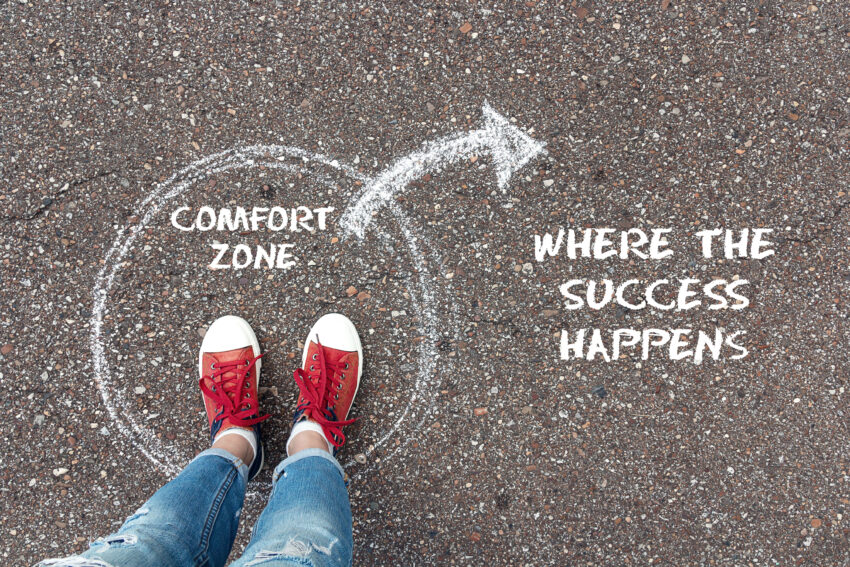Throughout history, change has come from individuals standing up for what they believe in and challenging the behaviours they believe to be harmful. Whether you are challenging injustices on the world stage or within your workplace, confronting these behaviours can bring about real change.
However, managing challenging conversations effectively takes courage and confidence and, with the majority of business communications having moved online, having these conversations within a professional setting are now even harder.
RADA Business’ research report, All the workplace is a stage, found that women are 60% more likely than men to say they never feel comfortable expressing themselves at work. Meanwhile, their report ‘Beating workplace performance anxiety’ found that women are 42% more likely than men to feel anxious when spontaneously being asked to comment or give ideas in a meeting.
The research shows that women find it more difficult to communicate effectively and authentically than their male counterparts, which is why challenging within the workplace is likely to be particularly uncomfortable for many women.
Despite this, by developing their leadership performance, there are many ways that women can learn to challenge effectively.
RADA Business tutor, Kath Burlinson, shares some insight.
Prepare to challenge
When approaching a difficult conversation, take time to prepare both physically and mentally.
Think about what you want to say and reduce this to three key points – establishing the main key points that you want to cover will allow you to stay focused and steer the conversation.
Next, mentally rehearse what you want to say and envision the outcome you are hoping to achieve. Taking time to practice in advance will mean you can approach the conversation with a calmer and more prepared mindset; it will help you keep your goal in mind and build the confidence you have in your communication.
To physically prepare yourself before the conversation, shake your body out from head to toe to help it feel loose and relaxed. When we feel nervous, we can forget to breathe properly, so before the meeting begins, take deep breaths that are slow and rhythmic. This will improve the connection between your body and mind and reduce any pre-meeting nerves.
Vocal and physical presence
Holding your space in challenging situations can be difficult, but it is important to ensure that your physical and vocal presence is commanding.
By using our body, breath and voice, we can manage the situation, stay calm and help to assert authority.
Sit upright in your chair, shoulders open, legs uncrossed, and feet planted firmly on the floor. This will help ground you and help prepare you for the conversation – giving you a strong base to operate from. This stance also allows your lungs to have full capacity, so you can breathe deeply and set your voice free as you begin to speak.
Use your voice to establish your authority. Vary your pitch and tone to keep people engaged, and remember to end your sentences on a full stop so that they are making statements and not asking questions.
When taking part in a challenging conversation, we may often feel the need to fill the silence. However, before speaking, remember to pause and breathe out, as it buys you time to develop a thought. Then use “one breath, one thought” instead of blurting out a flustered response in a difficult or pressured situation.
If someone tries to interrupt you whilst talking, say a simple and clear phrase such as “I’m speaking” politely, and continue as you were. Women can often feel obligated to apologise for speaking their mind or taking up time within a conversation. Avoid making any apologies and take your time to speak. After all, what you have to say is important.
Communicating effectively in a virtual setting
Whether you are still working entirely remotely or taking a blended approach to work, many of these difficult conversations will still be taking place virtually for the foreseeable future.
While virtual calls may feel less natural than an in-person conversation, there are a few practical things you can do to maintain effective and confident communication virtually.
Firstly, make sure your camera is in the right position. Your camera should face you front on, and your eyes should be roughly two-thirds of the way up the screen. Ensure you are lit adequately from the front and avoid any backlight.
We all tend to want to connect with the people we’re talking to, which means we are eager on virtual calls to look at the faces on our screens when we present. However, this can actually hinder the delivery of our message, which is why at RADA Business, we encourage people to look at ‘the green dot’ when presenting on video calls – the light that usually appears next to your camera when it is turned on. By keeping this focus, your message is likely to be received more directly and land more effectively.
Ensure your camera is as close to your own eye level as much as possible and give people the ability to see more of you. Think about showing yourself from the mid-chest up but still remembering the two-thirds-eye-level rule.
Finally, although you are communicating virtually, consider the space you take up in the real world, and this will portray itself over video as well.
The world-leading tutors at RADA Business help women develop their leadership performance at three key career stages. To learn more about their Executive Presence, Impact and Influence, or Stepping up with Confidence for Women programmes, please visit radabusiness.com/courses-individuals

Kath Burlinson PhD is a communications skills coach with extensive experience of leading training and development programmes.









